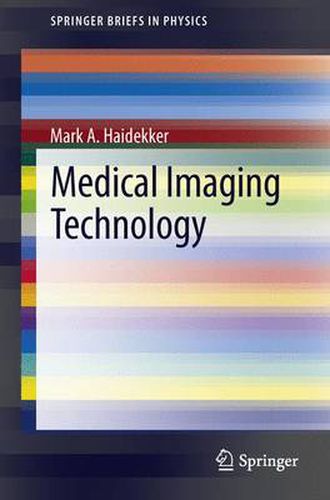Readings Newsletter
Become a Readings Member to make your shopping experience even easier.
Sign in or sign up for free!
You’re not far away from qualifying for FREE standard shipping within Australia
You’ve qualified for FREE standard shipping within Australia
The cart is loading…






This title is printed to order. This book may have been self-published. If so, we cannot guarantee the quality of the content. In the main most books will have gone through the editing process however some may not. We therefore suggest that you be aware of this before ordering this book. If in doubt check either the author or publisher’s details as we are unable to accept any returns unless they are faulty. Please contact us if you have any questions.
Biomedical imaging is a relatively young discipline that started with Conrad Wilhelm Roentgen’s discovery of the x-ray in 1895. X-ray imaging was rapidly adopted in hospitals around the world. However, it was the advent of computerized data and image processing that made revolutionary new imaging modalities possible. Today, cross-sections and three-dimensional reconstructions of the organs inside the human body is possible with unprecedented speed, detail and quality.
This book provides an introduction into the principles of image formation of key medical imaging modalities: X-ray projection imaging, x-ray computed tomography, magnetic resonance imaging, ultrasound imaging, and radionuclide imaging. Recent developments in optical imaging are also covered. For each imaging modality, the introduction into the physical principles and sources of contrast is provided, followed by the methods of image formation, engineering aspects of the imaging devices, and a discussion of strengths and limitations of the modality.
With this book, the reader gains a broad foundation of understanding and knowledge how today’s medical imaging devices operate. In addition, the chapters in this book can serve as an entry point for the in-depth study of individual modalities by providing the essential basics of each modality in a comprehensive and easy-to-understand manner. As such, this book is equally attractive as a textbook for undergraduate or graduate biomedical imaging classes and as a reference and self-study guide for more specialized in-depth studies.
$9.00 standard shipping within Australia
FREE standard shipping within Australia for orders over $100.00
Express & International shipping calculated at checkout
This title is printed to order. This book may have been self-published. If so, we cannot guarantee the quality of the content. In the main most books will have gone through the editing process however some may not. We therefore suggest that you be aware of this before ordering this book. If in doubt check either the author or publisher’s details as we are unable to accept any returns unless they are faulty. Please contact us if you have any questions.
Biomedical imaging is a relatively young discipline that started with Conrad Wilhelm Roentgen’s discovery of the x-ray in 1895. X-ray imaging was rapidly adopted in hospitals around the world. However, it was the advent of computerized data and image processing that made revolutionary new imaging modalities possible. Today, cross-sections and three-dimensional reconstructions of the organs inside the human body is possible with unprecedented speed, detail and quality.
This book provides an introduction into the principles of image formation of key medical imaging modalities: X-ray projection imaging, x-ray computed tomography, magnetic resonance imaging, ultrasound imaging, and radionuclide imaging. Recent developments in optical imaging are also covered. For each imaging modality, the introduction into the physical principles and sources of contrast is provided, followed by the methods of image formation, engineering aspects of the imaging devices, and a discussion of strengths and limitations of the modality.
With this book, the reader gains a broad foundation of understanding and knowledge how today’s medical imaging devices operate. In addition, the chapters in this book can serve as an entry point for the in-depth study of individual modalities by providing the essential basics of each modality in a comprehensive and easy-to-understand manner. As such, this book is equally attractive as a textbook for undergraduate or graduate biomedical imaging classes and as a reference and self-study guide for more specialized in-depth studies.